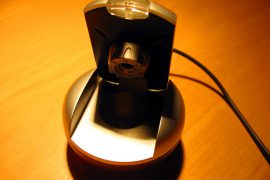For Dr Jennifer Ferng, the unit coordinator of MARC5010/MARC5020 within the Master of Architecture degree, peer engagement meant building community within studios, leveraging students’ talent and knowledge, as well as providing opportunities for them to see more design work from their peers and receive feedback from them.
To achieve her goals, Dr. Ferng sought support from the Educational Innovation (EI) team through the Educational Design Accelerator (EDA) initiative. The EDA is designed to support academics to address a finite learning and teaching issue over a few weeks or months and generate practical, sustainable solutions that can be quickly implemented.
I spoke to Dr Ferng and educational designer Courtney Shalavin about their experience with the EDA in Semester 2, 2022.
(This article was contributed by Rita Prestigiacomo, Jennifer Ferng & Courtney Shalavin).
Rita: How did you hear about the EDA?
Jennifer: I heard about it through our Associate Dean (Research Education), and I thought it would be an excellent opportunity to get professional input into the two studio units. I was willing to try a couple of new things, improve my teaching and learn more about the resources at the University.
Rita: What learning and teaching challenge(s) did you identify in MARC5010/MARC5020?
Jennifer: I pitched two teaching and learning challenges to the EDA. The first was engagement across six studios under this particular co-badged unit. The second challenge revolved around getting the visibility of students’ projects and showing their work in progress through a more engaging and dynamic approach.
Rita: What did the EDA process involve?
Jennifer: I first met with Kimberly Baskin (Educational Design Manager, Educational Innovation) to discuss the needs of the unit, the most significant touch points I wanted to address and where I was coming from as a teacher. I then had a brainstorming session with the project teams from the school (Courtney Shalavin and myself) and EI (Aaron Baird, Sarah Humphreys, Ruth Weeks, Pam Brañas, and Eszter Kalman) to develop approaches and activities to address the dual aims of the project. Then, in a follow-up Zoom session, each designer pitched a template for the new activities with a brief on how to implement them in class (for an example of one of these designs, see the Studio Scavanger Hunt Activity).
Rita: What worked well this semester as a result of the EDA implementation?
Jennifer: The critical scavenger hunt activity worked well early in the semester. Using Padlet, students had to find the answers to certain questions by exploring other studios. The aim was to boost a studio culture that fosters connections. Students loved it. Later in the semester, we began using H5P to embed a gallery of student work on our Canvas front page.
This allowed students to see and appreciate the work of their peers across the six studios.
Rita: What needs further refinement for your next iteration of teaching?
Jennifer: There was a lot of energy for the first scavenger hunt, and then, as the semester went on, students’ availability to post their ideas just went down. In the next iteration, I would like to have that information shared online more interactively. I’d also like to broaden the peer-to-peer discussion with a midterm check-in to see students’ progress and get their feedback. Finally, I’d like group work to perform better by talking more to students about its importance in design disciplines.
Courtney: Jennifer had many of the things I would refer to as good educational design. Group work can always be improved, and getting students connected post-pandemic is so valuable.
Rita: Can you share insights and reflections from the EDA process and its outcome?
Jennifer: I highly recommend the EDA: five out of five stars for me!
Reaching out to colleagues in the EI team gave me the confidence to try new learning approaches as I felt supported by professional staff with a varied wealth of information.
My advice for those interested would be to take a step back, reassess this past year or two years, and identify one or two aspects you would like to improve in your own teaching context.
Courtney: I encourage academics to jump on board. You’re leveraging brains that know what’s happening across the institution and that can use that knowledge to do something good for your unit.
To address a learning and teaching challenge through the Educational Design Accelerator, University of Sydney unit coordinators can sign up here: https://bit.ly/ei-eda.





